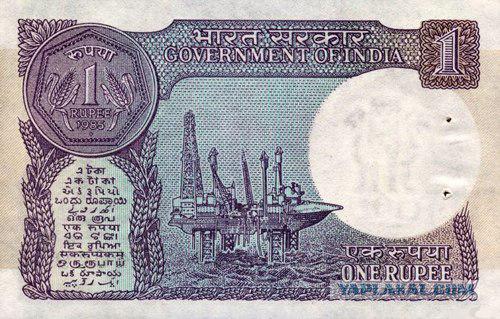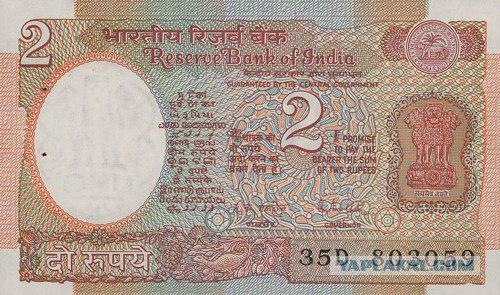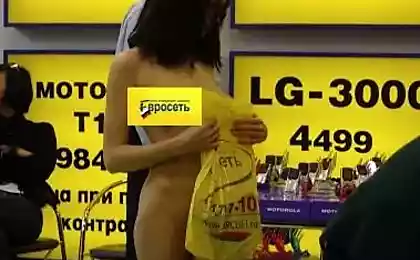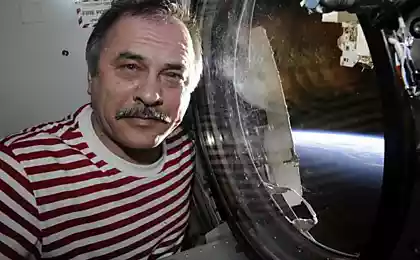624
I wonder about the Indian rupee (6 Picchu)
On Ineta I came across some interesting facts about the Indian money. Arrange in a single post. Those who wish to - welcome!

In contrast, the currencies of some other countries, the Indian rupee has no graphical symbol easily recognizable throughout the world. In order to create such a symbol, the Indian government announced the All India contest for the best design of the rupee symbol. The contest will run until April 15, 2009.
They have a lot of walking patterns of notes. I've lost count.
Scans samples immediately interested.

On the Indian banknotes always have pinholes in the left margin. They arise because the country adopted stitch up banknotes in packs. Previously, they stitched thread now bonded stationery staples.

The bank notes fastened stepplerom Rs. As necessary, you just rip out the necessary number of bundles of banknotes.
What are the holes, it does not create any problems for solvency.

Travelers departing in India should know that using local bills, they are at serious risk for their health. Indian scientists have found: any dirty banknotes are carriers of the virus are extremely dangerous bacteria that cause diseases such as tuberculosis, tonsillitis, pneumonia, lung abscess, meningitis, sexually transmitted diseases. But Indian banknotes, due to the peculiarities of local life, and morbidity, more dangerous than other many times. According to the researchers, from the Indians themselves to this kind of virus develop immunity, but for tourists, they pose a real threat. In this regard, people planning to visit India, it is strongly recommended to perform basic hygiene: after each contact with rupees and before eating should carefully wash their hands. It is important to avoid contact with the skin of notes, and not even touch them, with the cuts. Also, do not keep money Indian currency units close to their own country, because viruses can roam from the bill to the bill.

Resourceful Indians opened a legal method of dealing with dirty money. In their workshops, they bought cheaply restore the old notes with defects, and then resell them at a profit.
Workshops, where laundered dirty money, is located in the old part of New Delhi. Many small shops in the crowded alleys called Kakko Bagh. Here with his shabby rupees residents flock from all over the surrounding area. It's so dirty and greasy money that they do not accept payment in any store. However Kakko Bagh these insolvent banknotes always find a buyer, but at a price below par. Then getting into the act, "washers". Soiled banknotes are washed with soap and water, torn pieces are connected with adhesive tape. Patch holes with newspaper or other pieces of banknotes.
India is booming as never before to deal with legal money laundering, and this boom says a lot about the current state of the Indian money economy. Over the past five years, circulation of cash almost doubled. But the staff in the Indian central bank, however, during this time was no more. Accordingly, the bank seriously to withdraw from the use of old banknotes and on time to print new. In developed countries, private banks usually send notes, unusable, back in the central bank, which is engaged in their destruction. In India, the situation is different.
All this opens up a niche market for "cleaners" money. Every day, they spend the packet is restored banknotes to the Central Bank in New Delhi. There's 5,000 employees are engaged exclusively in that check the banknotes for authenticity and accept them. Here, "washers" get money for the purchased cheaply bill their full face value, that brings them a guaranteed profit.
Each ticket office accepts notes only certain dignity and in a certain state. Anyone who does not understand the regulations, can spend the whole day in line, exchanging only a couple of battered Rs. The point here often comes to fisticuffs.
Currently, the Central Bank is trying to fight the "washers" of money his way - to improve the quality of banknotes. For their printing is now used in more durable paper, which is stable even in the difficult Indian conditions. However, while the "cleaners" did not care about the future of torment. They intend to bequeath to his sons, workshops, and say that this is a good and profitable business.

Source:

In contrast, the currencies of some other countries, the Indian rupee has no graphical symbol easily recognizable throughout the world. In order to create such a symbol, the Indian government announced the All India contest for the best design of the rupee symbol. The contest will run until April 15, 2009.
They have a lot of walking patterns of notes. I've lost count.
Scans samples immediately interested.

On the Indian banknotes always have pinholes in the left margin. They arise because the country adopted stitch up banknotes in packs. Previously, they stitched thread now bonded stationery staples.

The bank notes fastened stepplerom Rs. As necessary, you just rip out the necessary number of bundles of banknotes.
What are the holes, it does not create any problems for solvency.

Travelers departing in India should know that using local bills, they are at serious risk for their health. Indian scientists have found: any dirty banknotes are carriers of the virus are extremely dangerous bacteria that cause diseases such as tuberculosis, tonsillitis, pneumonia, lung abscess, meningitis, sexually transmitted diseases. But Indian banknotes, due to the peculiarities of local life, and morbidity, more dangerous than other many times. According to the researchers, from the Indians themselves to this kind of virus develop immunity, but for tourists, they pose a real threat. In this regard, people planning to visit India, it is strongly recommended to perform basic hygiene: after each contact with rupees and before eating should carefully wash their hands. It is important to avoid contact with the skin of notes, and not even touch them, with the cuts. Also, do not keep money Indian currency units close to their own country, because viruses can roam from the bill to the bill.

Resourceful Indians opened a legal method of dealing with dirty money. In their workshops, they bought cheaply restore the old notes with defects, and then resell them at a profit.
Workshops, where laundered dirty money, is located in the old part of New Delhi. Many small shops in the crowded alleys called Kakko Bagh. Here with his shabby rupees residents flock from all over the surrounding area. It's so dirty and greasy money that they do not accept payment in any store. However Kakko Bagh these insolvent banknotes always find a buyer, but at a price below par. Then getting into the act, "washers". Soiled banknotes are washed with soap and water, torn pieces are connected with adhesive tape. Patch holes with newspaper or other pieces of banknotes.
India is booming as never before to deal with legal money laundering, and this boom says a lot about the current state of the Indian money economy. Over the past five years, circulation of cash almost doubled. But the staff in the Indian central bank, however, during this time was no more. Accordingly, the bank seriously to withdraw from the use of old banknotes and on time to print new. In developed countries, private banks usually send notes, unusable, back in the central bank, which is engaged in their destruction. In India, the situation is different.
All this opens up a niche market for "cleaners" money. Every day, they spend the packet is restored banknotes to the Central Bank in New Delhi. There's 5,000 employees are engaged exclusively in that check the banknotes for authenticity and accept them. Here, "washers" get money for the purchased cheaply bill their full face value, that brings them a guaranteed profit.
Each ticket office accepts notes only certain dignity and in a certain state. Anyone who does not understand the regulations, can spend the whole day in line, exchanging only a couple of battered Rs. The point here often comes to fisticuffs.
Currently, the Central Bank is trying to fight the "washers" of money his way - to improve the quality of banknotes. For their printing is now used in more durable paper, which is stable even in the difficult Indian conditions. However, while the "cleaners" did not care about the future of torment. They intend to bequeath to his sons, workshops, and say that this is a good and profitable business.

Source:






















